msmenggworks87@gmail.com | +91 9207000035 | Industrial Area, Phase-1, Chandigarh
The Ultimate Guide to Screws: Everything You Need to Know
M.S.M Engg Works
6/16/20244 min read


Introduction
Screws are among the most essential and versatile fasteners used in countless applications, from simple DIY projects to complex industrial machinery. This guide will take you through everything you need to know about screws, helping you make informed decisions for your projects.
What is a Screw?
A screw is a type of fastener characterized by a helical ridge, known as a thread, that wraps around a cylindrical shaft. Screws convert rotational force into linear motion, allowing them to secure materials together.
Types of Screws
Understanding the various types of screws is crucial for selecting the right one for your needs. Here are some common types:
Wood Screws
Designed for wood applications
Coarse threads to grip wood fibers
Tapered shaft to prevent splitting
Machine Screws
Uniform diameter along the length
Used with nuts or tapped holes in metal or plastic
Available in various head shapes and drive types
Sheet Metal Screw
Used to secure metal sheets together
Sharp threads for cutting into metal
Often self-tapping, eliminating the need for pre-drilling
Self-Tapping Screws
Can create their own thread in materials
Ideal for joining dissimilar materials like metal and plastic
Deck Screws
Designed for outdoor use, often coated for corrosion resistance
Specific thread design for gripping decking material securely
Drywall Screws
Designed for attaching drywall to wood or metal studs
Bugle head to avoid tearing drywall paper
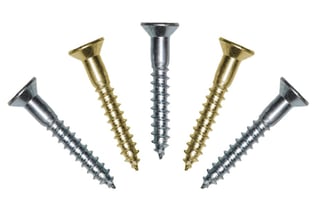

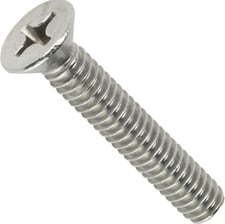





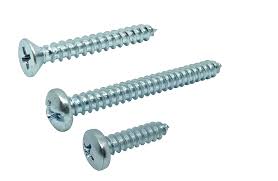

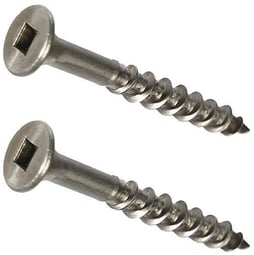

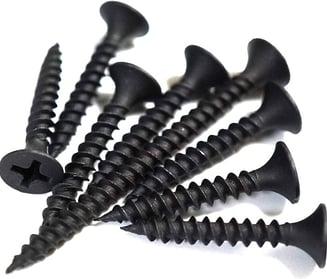


Materials
The material of a screw determines its strength, corrosion resistance, and suitability for different environments. Common materials include:
Steel
Most common material
High strength and durability
Can be coated for rust resistance
Stainless Steel
Excellent corrosion resistance
Ideal for outdoor and marine applications
Brass
Good corrosion resistance
Aesthetic appeal for decorative applications
Aluminum
Lightweight and corrosion-resistant
Suitable for applications where weight is a concern
Screw Head Types
The head type affects how the screw is driven and its appearance once installed:
Flat Head
Sits flush with the surface
Ideal for countersinking
Pan Head
Rounded top with a flat underside
Provides a large bearing surface
Phillips Head
Cross-shaped drive
Designed to prevent over-tightening
Torx Head
Star-shaped drive
Reduces cam-out and provides high torque transfer
Hex Head
Hexagonal shape for use with a wrench or socket
Common in construction and machinery
Thread Types
Screw threads vary based on the application and material:
Coarse Threads
Fewer threads per inch
Better for softer materials like wood
Fine Threads
More threads per inch
Better for hard materials and high-precision applications
Self-Tapping Threads
Designed to cut their own threads into materials
Selecting the Right Screw
Choosing the right screw involves considering the material, size, head type, and thread type:
Material Compatibility
Match the screw material with the application environment to prevent corrosion.
Size
Ensure the screw length and diameter are appropriate for the materials being fastened.
Head Type
Choose a head type based on the desired appearance and the driving tool available.
Thread Type
Select the thread type based on the materials being joined and the need for self-tapping.

How to Use Screws Properly
Pre-Drilling
For hard materials, pre-drilling a pilot hole can prevent splitting and make driving easier.
Proper Torque
Use the correct amount of torque to avoid stripping the screw or damaging the material.
Countersinking
For flathead screws, countersink the hole to ensure the screw sits flush with the surface.
Common Mistakes to Avoid
Over-Tightening
Can strip the screw or damage the material.
Using the Wrong Screw Type
Choose screws designed for your specific application to ensure optimal performance.
Ignoring Corrosion Resistance
In outdoor or humid environments, use corrosion-resistant screws to prevent rusting.
Conclusion
Understanding the various types, materials, and uses of screws will help you select the right fastener for any project. Whether you're working on a DIY home improvement project or a large-scale industrial application, choosing the correct screw can make a significant difference in the quality and durability of your work.
By following this guide, you'll be well-equipped to make informed decisions and achieve the best results with your fastening needs.
Contact Us Today for Assistance
Have questions or need assistance? Contact us today to speak with a fastener expert! Ready to start your project? Request a free quote now!
Expert
+91 6280-801105
Quote

Quality Fasteners for Your Projects
Explore our wide range of fasteners and get expert advice today!
Not sure which screw?
Contact our team now!
Find the right fastener
Partner
Trusted name in the industry, offering top-notch products
Quality
Contact
msmenggworks87@gmail.com
+91 6280801105
+91 9207000035
© 2024. All rights reserved.
